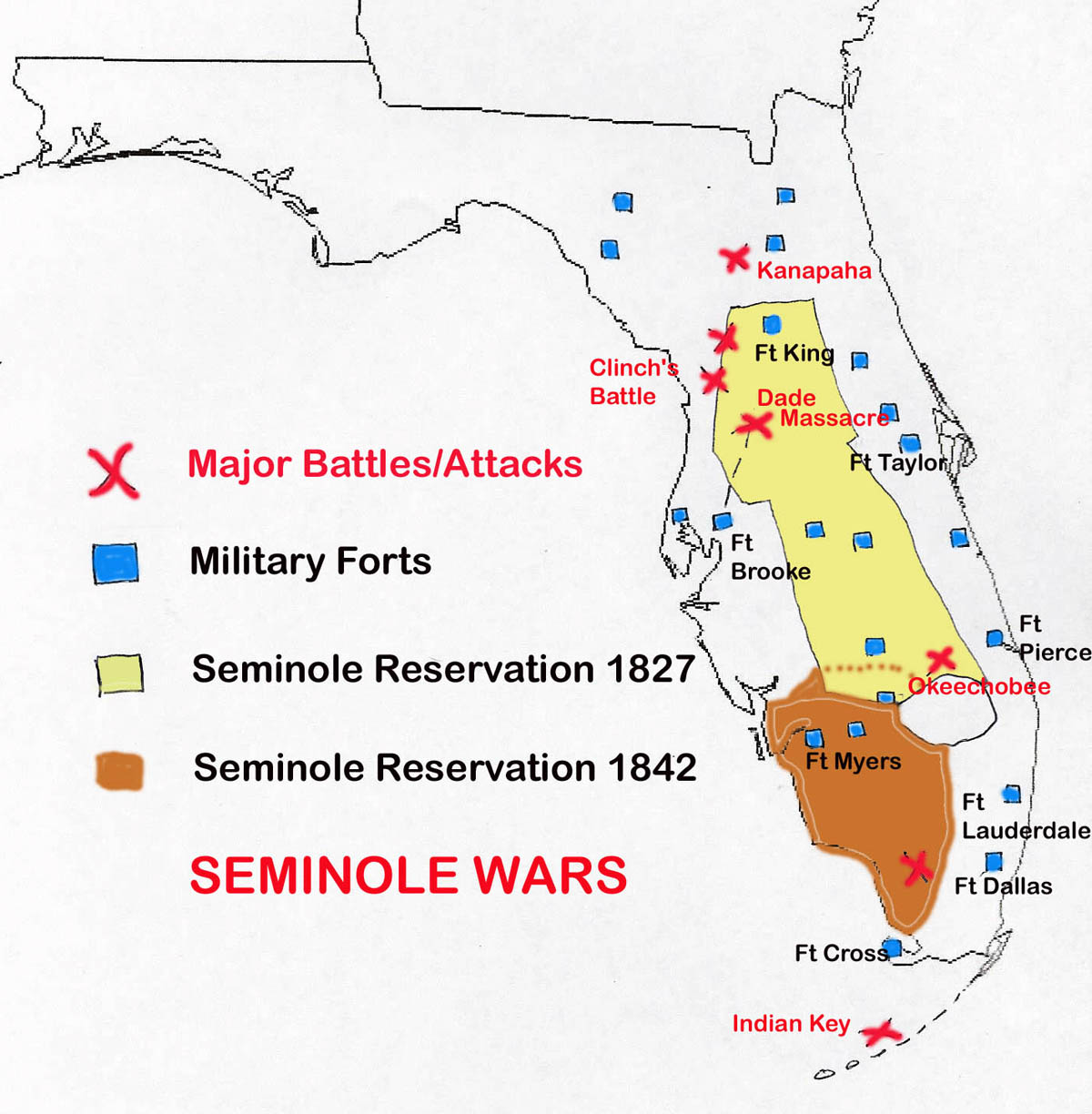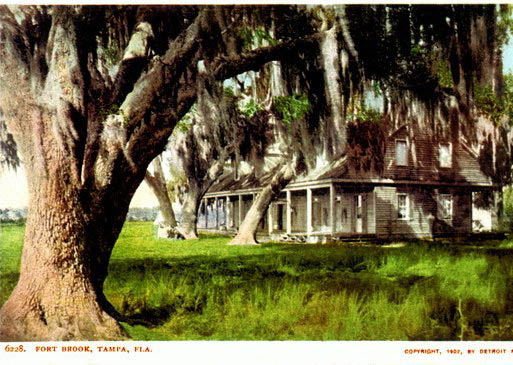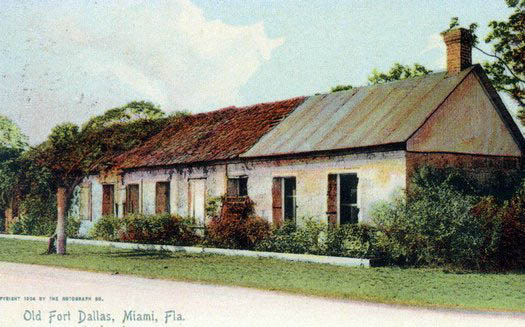

FLORIDA
OF THE SEMINOLES
THE STRUGGLE FOR THE SOUTHERN FRONTIER
THE SEMINOLE WARS OF FLORIDA
No event
hindered the development of the Territory
of Florida and slowed the
effort of Floridians to gain statehood more than the Seminole Wars. The conflict between white man and Indian in Florida became the longest continuous war in which the United States
Government engaged an enemy. To the Seminole, it is a war that never officially
ended.
The origin
of the Seminole conflict date back to Governor Moore's invasion into Spanish Florida in 1704 in which
he introduced bands of Creeks into the region to destroy the Spanish Apalachee. Many of these Indians remained in Florida and later joined the British to fight Georgia
settlers during the American Revolution.
The
development of the Southern states disrupted the boundaries of all native American groups in the region. In the mid-1700's
Creeks, predominately of the Hitchiti-speaking Oconee tribe, left Western Georgia
and moved southward to the Gainesville
prairies. Perhaps they were adventurous young Indians since Seminole means "runaway" or
"wild". More likely they were groups of Indians who found Spanish Florida a save refuge
from the onslaught of white settlements.
While
these Seminoles were not direct participants in the Creek Wars of 1813, their ability to adapt to such European ways
as wheat farming and cattle raising aroused the anger
of Georgia
farmers who accused them of stealing their cattle. Most of the Seminole herds
appeared to be wild Spanish stock. More significantly, planters noted that the
Indians welcomed and accepted the arrival of runaway African-American slaves.
When Florida became a Territory in 1821, its first Governor Andy Jackson considered the
some 7,000 Seminoles in Florida a major
handicap in the development of Florida.
Busy with the settlement of Americans, Jackson
did not have the time and manpower to curtail the arrival of even more Creeks
along the Panhandle.



THE TREATY OF MOULTRIE CREEK
In
September of 1823, the next Territorial Governor William F. Duval met the Seminoles at Moultrie Creek on the St. Johns River.
Duval proposed the creation of a reservation area in the southern interior of
the peninsula of Florida as the solution for the two
peoples. After much contriving, most chiefs accepted the plan, provided the
West Florida Creeks were given a treaty for land along the Apalachicola River.
The Seminoles made no commitment on slavery or alleged stolen cattle, two
important issues..
The more
militant braves never complied with the
Treaty of Moultrie Creek. They had already been forced from their
traditional hunting grounds, changed their livelihood from farming to cattle,
and disliked any form of confinement. Neamathia, a
Mikasukis from North Florida, challenged
Duval:
"Do you think . . . I am like a bat, that hangs by
its claws in a dark cave,, and that I can see nothing of what is going on
around me? Ever since I was a small boy I have seen the white people steadily
encroaching upon the Indians, and driving them from their homes and hunting
grounds . . . I will tell you plainly if I had the power, I would tonight cut
the throat of every white man in Florida.



Neamathia's fears
were quickly realized as conflict between Indian and white settler started
almost immediately after the signing of the document. By 1828, the Florida Legislative Council was urging Congress to remove
all Seminoles from Florida
Territory. Northern
Congressmen were reluctant to bring up the issue of the Smeinoles
in committee, but the new President Andrew Jackson, not friend to the Indians,
was firm in his plans to remove all troublesome tribes west of the Mississippi River. Since Florida
was a much needed slave territory, Southern Congressmen vigorously backed Jackson's plans.
Upon the
threat of losing their annual Government annuity to pay the cost of moving into
the new reservation area, the old chiefs agreed to discuss the problem with
Indian agent Colonel James Gadsden.
In the so-named Treaty of Payne's
Landing, outside Silver Springs, the chiefs agreed to send six Seminole
inspectors to Oklahoma
to check the proposed Seminole tribal grounds.
THE SECOND SEMINOLE WAR
The
inspectors would sign the Treaty of Fort Gibson
(Oklahoma) after their visit to Oklahoma. It is doubtful
if the Seminoles fully understood the full extent of the treaty, thanks it is
believed to the bribing of interpreters by Government agents. The Seminoles
were given a tourist tour of only the most desirable areas of the reservation.
They were not told they would share their reservation with other tribes not did
they satisfaction to their concerns about the suitability of the land to
Seminole crops.
The older
chiefs led by Micanopy accepted
the Treaty of Fort
Gibson, but younger
Indians became infuriated when details of the agreement became interpreted. A
young Indian named Osceola,
recently arrived from the Panhandle and vowed to
organize the younger Indians against the plan. Although wed to a Seminole, Osceola's mother was Choctaw and his father was believed to be a white trader from Mobile. Tribal websites note this fact today. Osceola knew white society and he knew that the treaty did not even guarantee that the Seminoles would not have to share land with other tribes.



Osceola
was particularly incensed when he discovered the Treaty indicated that runaway
slaves who lived with the Seminoles, many of them intermarried into the
villages, would remain in Florida.
It was apparent to Osceola, they would be returned to slavery even if it were
impossible to locate their previous owners.
While the
older chiefs prepared for travel to
Fort Brooke (Tampa) established for the debarkation by boat to Oklahoma
via the Mississippi-Arkansas River systems, Oscola
quickly thrust his knife into a copy of the treaty, shouting:
" Am I a Negro slave? My skin is dark, but not black! I am an Indian, a
Seminole. The white man shall not make me black. I will make the white man red
with blood, and then blacken him in the sun and rain, where the wolf shall gnaw
his bones and the buzzard shall live on his flesh."
In December
of 1835 Osceola began his war in dramatic fashion when his men ambushed the new
Indian agent General Wiley Thompson,
by his office just outside the gates of Fort King
(Ocala). The
Seminoles next killed Chief Emathia, who was helping Thompson recruit Indians to
go to Fort Brooke
(Tampa). The
reaction by the United States
Government was to send reinforcements even though there were few trained foot
soldiers in Florida.


An even
more stunning event would soon follow - the worst defeat of U.S. troops to the American Indian
outside of the stupidity of George Armstrong Custer. Major Francis L. Dade and 110 soldiers, many of them untrained artillery
soldiers, was ordered from Fort
Brooke (Tampa)
to bolster forces at Fort King (Ocala).
Halfway to their destination they were ambushed by a large band of Seminoles
and their slave allies, at a site where many of the Indians hide in the
unlikely spot of a lake bank. Only a few soldiers escaped the attack.


Unfortunately
for the Seminoles, the Dade Massacre
pressured Northerners in Congress to accept Southern proposals for more troops
and equipment. Since the Florida militia could
not assure protection to farmers and planters, homesteaders south of Gainesville fled to the
safety of the coast. The Government decided the Seminoles had to be surrounded
by a ring of small wooden forts where U.S. troops could operate in
protecting a region.
Fort
Lauderdale, Fort Myers, Fort Meade, and Fort
Pierce were started as forts in the Seminole Wars.
Even Fort Brooke
on Tampa Bay
was subject to increased protection as many Seminoles slipped away just minutes
for scheduled departure to Oklahoma.
Eventually, Seminoles were keep on Egmont Key to
assure their safe removal.
Federal
troops adopted a strategy of crisscrossing the interior by boat and foot
driving the Seminoles into open country. The major weakness of the Seminoles
was their women and children could not move around like the warrior units so the U. S. Government adopted a policy
of hunting down, uprooting, and capturing the Indian villages.


The Capture of Osceola A Prison Cell in Saint Augustine
In 1837
Osceola was captured under a flag of truce and delivered to General Thomas Jesup,
a Southerner in charge of the Indian war strategy. Osceola refused to accept
any Oklahoma agreement so he was transported to Four Moultrie's prison outside
Charleston, South Carolina, where the great Seminole warrior died of throat
inflammation. Even in death, Osceola was attacked as soldiers beheaded his body
before burial.
SEMINOLE WAR IN THE SWAMPS
The
surviving Seminoles were driven southward toward the Everglades.
They were used to adjusting their way of life, even some of their cultural
activities just to survive. Some Seminoles had married the last remaining Calusa and adopted an economy of hunting and fishing in the
swamps.
 FORCED MOVEMENT OF SEMINOLES SOUTHWARD IN FLORIDA
FORCED MOVEMENT OF SEMINOLES SOUTHWARD IN FLORIDA
Federal
troops built Fort Dallas on the banks of the Miami River to block the
route into the Everglades on the east and constructed Fort Dulaney at the mouth of the
Caloosahatchee to supply Fort Myers and Fort Denaud up the river. At the
latter fort Captain B. L. E. Bonneville launched boat patrols to disrupt the
Seminoles.
In May of
1838 General Alex Macomb signed
the Biscayne Bay agreements with Chief Chitto-Tustenuggee
of the Muskogees and Miccosukee. This temporary
provision allowed the Indians to stay in a district, from Punta Rassa at the mouth of the Caloosahatchee to Lake
Okeechobee, then south to the Shark
River and the Gulf. The
Indians considered this the first step to staying in Florida, but even this marshy wilderness
could not protect the Indians. Farmers and trappers ignored the agreement, and
Cuban fishermen, long time trading friends to the Indians, were told to avoid
Indian contact.
In July of
1839, open warfare broke out in Southwest Florida
when traders and Indians clashed. Chekiki, the last of the Calusa
tribe, allied his people with the Seminoles in a last ditch attempt at freedom.
THE THIRD SEMINOLE WAR
In 1841,
when North Florida was booming with settlers, South
Florida was still a war zone. Congress appropriated more than one
million dollars to capture by bribe or bullet the surviving Indians. The Indian
Council, headed by Holatta-Micco
(Billy Bowlegs) was determined to defend the Biscayne holdings. The
Third Artillery under Major Childs and
Lt. John McLaughlin began to crisscross the swamps with the intent of
destroying anything that would help the Seminoles. By 1842 230 Indians had been
captured by this strategy.



Billy Bowlegs of the Third Seminole War Andrew Jackson
There was
great pressure in Congress among Northerners to curtail this expensive and
bloody conflict, which could only result in the creation of another slave
state. A truce was started when Billy Bowlegs agreed to stop hostilities. It
did not last.
Inspired
by the discovery of the rich muck lands of the Okeechobee area, Governor Thomas Brown encouraged cattlemen and
farmers, protected by the Florida
militia, to enter the region. Fort
Myers was developed into a full sized village. In
December of 1855, Lt. George Hardstuff, on a "survey" of Seminole
facilities, ram survey lines across Billy Bowlegs
prize banana garden. The Indians returned to the war.
Five
hundred dollar rewards for braves, $250 for women, and $100 for children were
offered to white bounty hunters. Indians could receive the same rewards for
giving up. The Seminoles rejected the financial rewards and began their guerrilla warfare. A band of forty Oklahoma Seminole could
not convince the Indians to surrender.
Billy
Bowlegs rejected bribes of $5,000 plus $100 per surrendered Indian, but when
his granddaughter was seized, he was forced to surrender. On May 4, 1858, the
last of the famous Seminole warriors met the soldiers at Billy's Creek and was
sent forever from Florida.
A handful of Seminoles remained in the Everglades,
but fighting ended.
The
Seminoles had delayed Florida
statehood for thirty years. They had never surrendered, each person allowed to
decide whether to accept a treaty. Now the frontier was ready for settlement
and only the Civil War would delay the potential growth of this last frontier.








![]()






 FORCED MOVEMENT OF SEMINOLES SOUTHWARD IN
FORCED MOVEMENT OF SEMINOLES SOUTHWARD IN 



